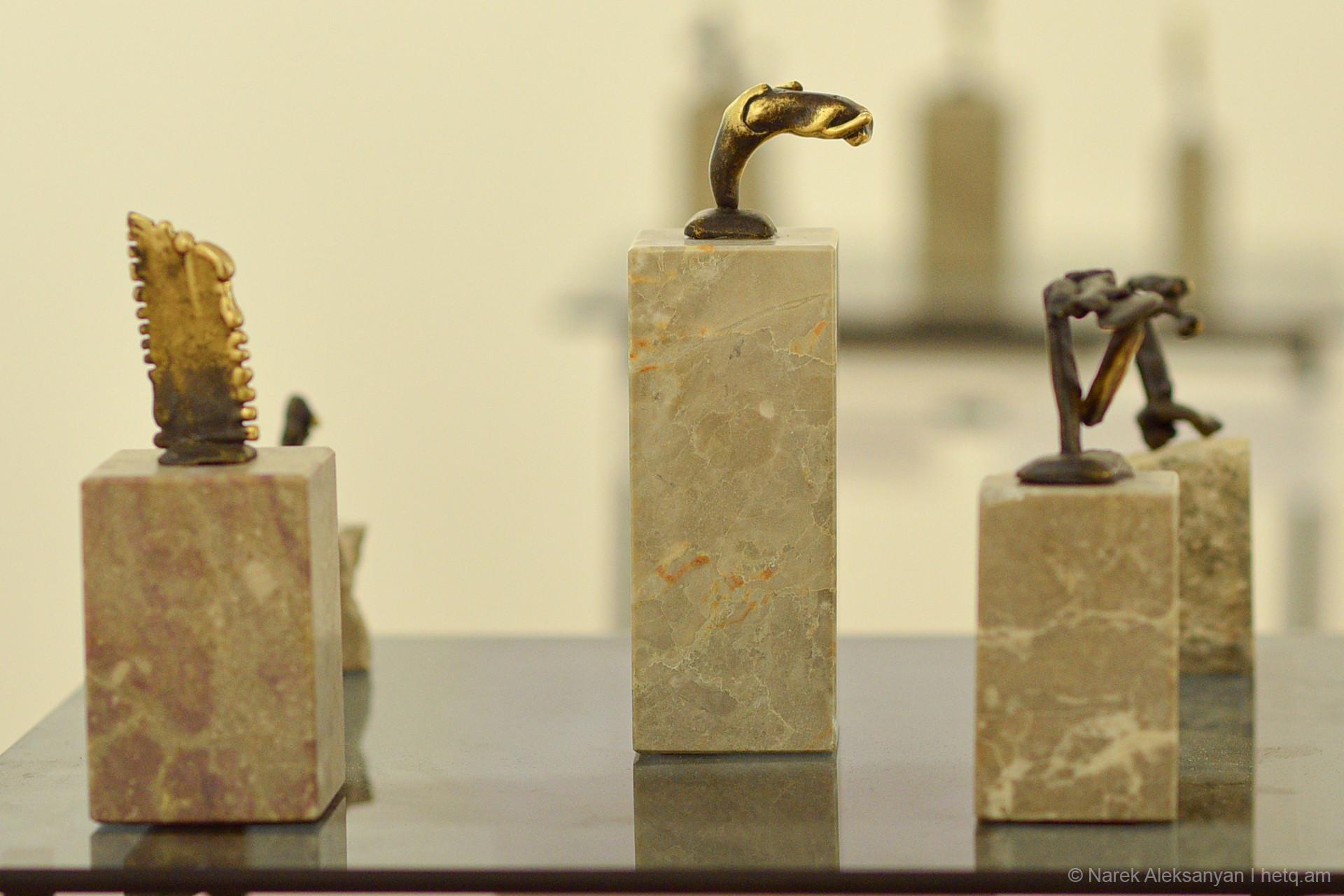
Moving On Despite the Pain: 2020 Artsakh War Vet Finds Outlet in Sculpture
Twenty-two-year-old Eric Grigoryan doesn’t like to talk much about the 2020 Karabakh war and how he barely survived the fighting while serving as a tank driver/mechanic.
The former Shushi resident now looks to the future despite longing for his family home now under Azerbaijani control.
The young man has now turned to sculpting as a form of therapy, a way to express how that war changed his life. He lost friends in the war and was severely injured himself, losing a leg.
Eric says he can handle the physical pain, but the emotional impacts run deep.
This reporter talked to Eric at a Yerevan exhibition of his miniature sculptures at the Art Kvartal gallery. The exhibition is called Kutchir Emotions. In the Artsakh Armenian dialect, “kutchir” means small.
Eric, the youngest of three brothers, says sale from his works will go to help wounded Armenian soldiers in the provinces.
It’s early and there’s no one in the gallery.
“I miss everything about Shushi, starting with the air. These are your feelings not yet lost. I miss the church, the stones, the yard, the hills,” Eric tells me.
The fifty bronze statuettes are placed on stones that Eric’s father brought from Artsakh.
During the war, father and son were at the front. They met once during the fighting. The second meeting was at Yerevan’s Erebuni Hospital. One week after Eric was injured, his father was injured as well. Both wound up at the same hospital.
Eric and his mother now live in Yerevan. Eric’s father returned to Artsakh after being treated and now serves as a volunteer in Askeran. Eric was second year agriculture and husbandry student when drafted.
It was October 24, 2020. Eric and 2 fellow Armenian soldiers were taking shelter in a ditch from Azerbaijani artillery fire. They were in close combat, throwing grenades at the enemy.
A shell exploded above them, and they were hit by the shrapnel. One of them died on the spot.
There are more than 100 shrapnel fragments in Eric's body. He says doctors removed the hand fragments, but they could not remove the one near his heart. He says they do not bother him.
After the exhibition, Eric will leave for Artsakh.
When asked if he received any military awards, Eric smiles and asks why should he?
One of his works at the exhibit is entitled "The man near the mirror".
“He always looks in the mirror and cries. He is old and is disgusted with himself. But life is given to man once. You reach a certain age and start growing old. It should never be made a subject of sadness. The world is infinite in its good manifestations. You must stay young inside, so you don't stop,” says Eric.
When asked about his future plans, Eric says he’ll probably tackle larger sculptures.
“Eric, if one day you go to Shushi, what will you do first?” I ask.
"I will visit our house and sleep," he answers. We're silent again. I turn off the recorder.
"Never give up” is written on Eric’s shirt. It’s his mantra. He says he updates his closet with T-shirts with such inscriptions.
He continues to jot down short musings to accompany his sculptures.
“I think about connecting all those lines, but I don’t know what the result will be. How many stories can you place on one statute?” he asks.
P.S. - Eric's exhibition will be open until the end of June.
Photos by Narek Aleksanyan
 Videos
Videos Photos
Photos



Write a comment